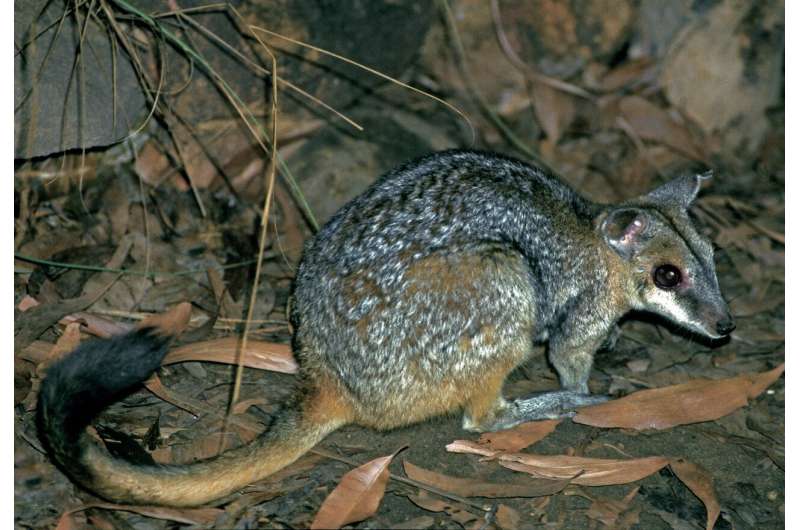Australian rock-wallabies, particularly dwarf species like the nabarlek, have long intrigued scientists with their ability to thrive despite their diminutive size. In a fascinating study led by researchers from Flinders University, the extraordinary biting capabilities of these small marsupials have been unveiled, shedding light on their remarkable adaptations and earning them the moniker “little Napoleons” of the animal kingdom. Published in Biology Letters, the research explores how these tiny rock-wallabies punch above their weight in feeding behaviors, providing insights into their evolutionary journey and unique ecological niche.
The Phenomenon of “Little Wallaby Syndrome”: Dr. Rex Mitchell and his team embarked on a quest to decipher the secrets behind the dietary prowess of dwarf rock-wallabies. Inspired by observations of these diminutive creatures tackling food challenges comparable to their much larger counterparts, the researchers coined the concept of “Little Wallaby Syndrome.” This phenomenon highlights the inherent ability of small rock-wallabies to overcome size constraints and assert dominance in their feeding habits, reminiscent of the resilience embodied by historical figures like Napoleon Bonaparte.
Skull Adaptations for Formidable Biting: To unravel the mysteries of “Little Wallaby Syndrome,” the research team conducted a comprehensive analysis of nearly 400 rock-wallaby skulls, encompassing all 17 species. Their investigations revealed intriguing adaptations in the skulls of dwarf species, notably the nabarlek, facilitating superior biting capabilities. Unlike their larger relatives, dwarf rock-wallabies exhibited shorter, rounder snouts and strategically positioned teeth at the back of the jaw, enhancing their efficacy in delivering forceful bites. Moreover, the presence of larger teeth, particularly in proportion to their size, underscored their specialized adaptations for grappling with tough vegetation.
Distinctive Dental Features: Among the notable findings of the study were the distinct dental characteristics observed in dwarf rock-wallabies. The researchers uncovered variations in tooth morphology between species, with some displaying remarkably larger molars or premolars tailored to their dietary preferences. These dental adaptations, such as continuously growing molars in nabarleks, reflect specialized strategies for processing vegetation types ranging from grass to shrubs. Such nuanced dental features highlight the intricate interplay between evolutionary pressures and ecological niches in shaping the feeding biology of dwarf rock-wallabies.
Implications for Evolutionary Biology: The revelations stemming from this study carry profound implications for our understanding of evolutionary processes and functional morphology in marsupials. By elucidating the link between skull size, shape, and feeding adaptations, the research underscores the significance of ecological context in driving evolutionary trajectories. Furthermore, the identification of “Little Wallaby Syndrome” underscores the resilience and adaptability of small-bodied organisms in navigating ecological challenges, offering valuable insights into the broader dynamics of species interactions and ecosystem functioning.
In unraveling the enigma of “Little Wallaby Syndrome,” the research led by Flinders University pioneers a deeper appreciation for the remarkable adaptations of dwarf rock-wallabies. Through meticulous analysis of skull morphology and dental structures, the study unveils the hidden biomechanical secrets behind these small marsupials’ formidable biting prowess. As we delve deeper into the intricacies of evolutionary biology, the insights gleaned from dwarf rock-wallabies serve as a testament to nature’s ingenuity and resilience in the face of ecological pressures. By embracing interdisciplinary approaches and fostering scientific curiosity, we continue to unravel the mysteries of the natural world and pave the way for a deeper understanding of life’s diversity and complexity.
